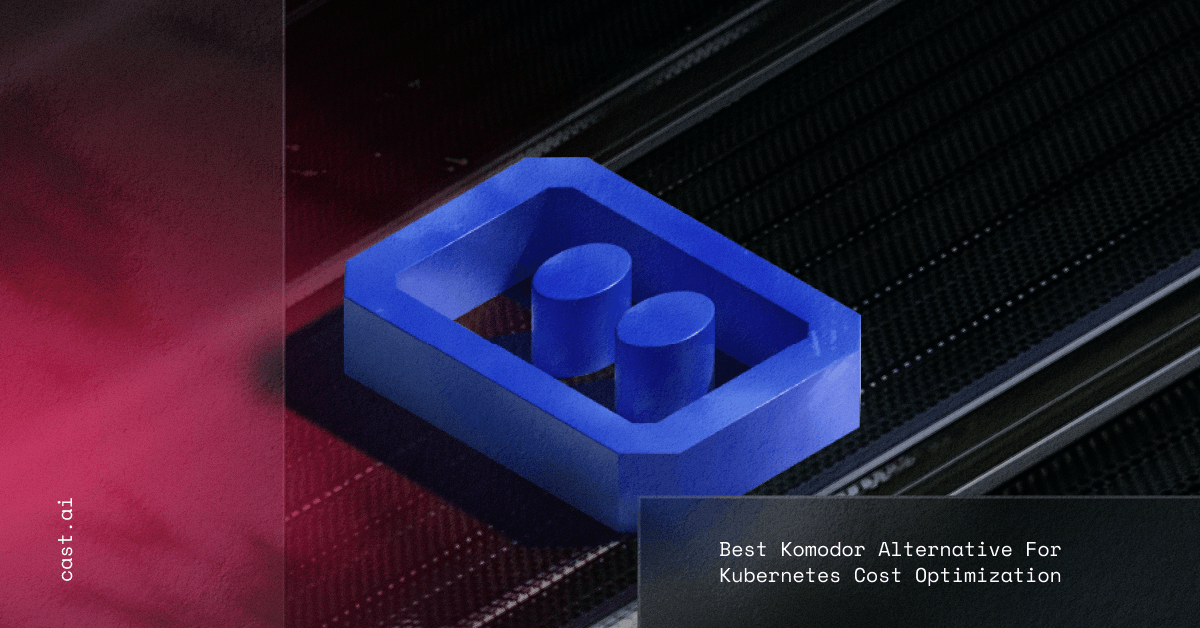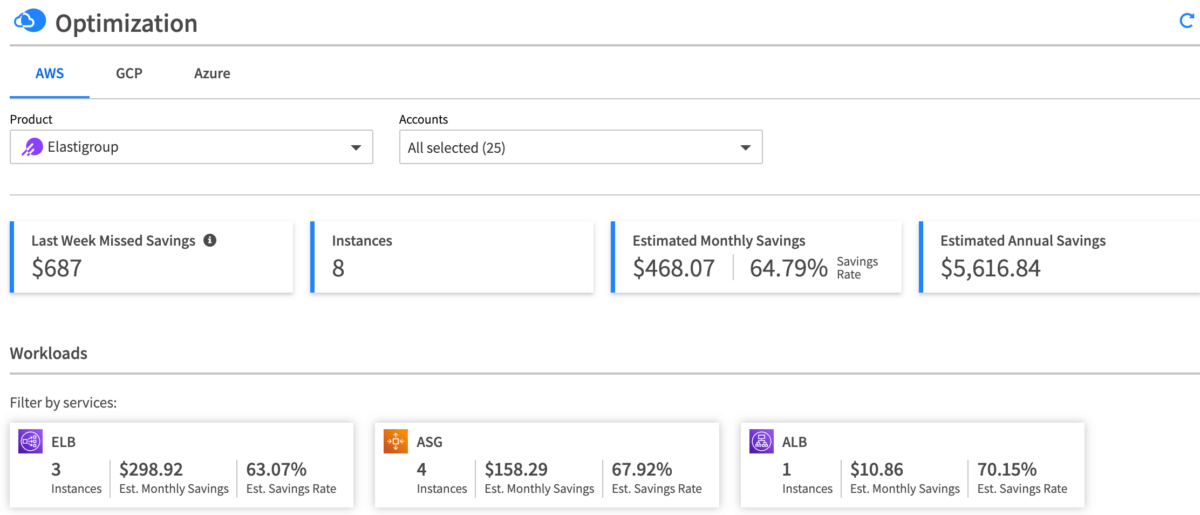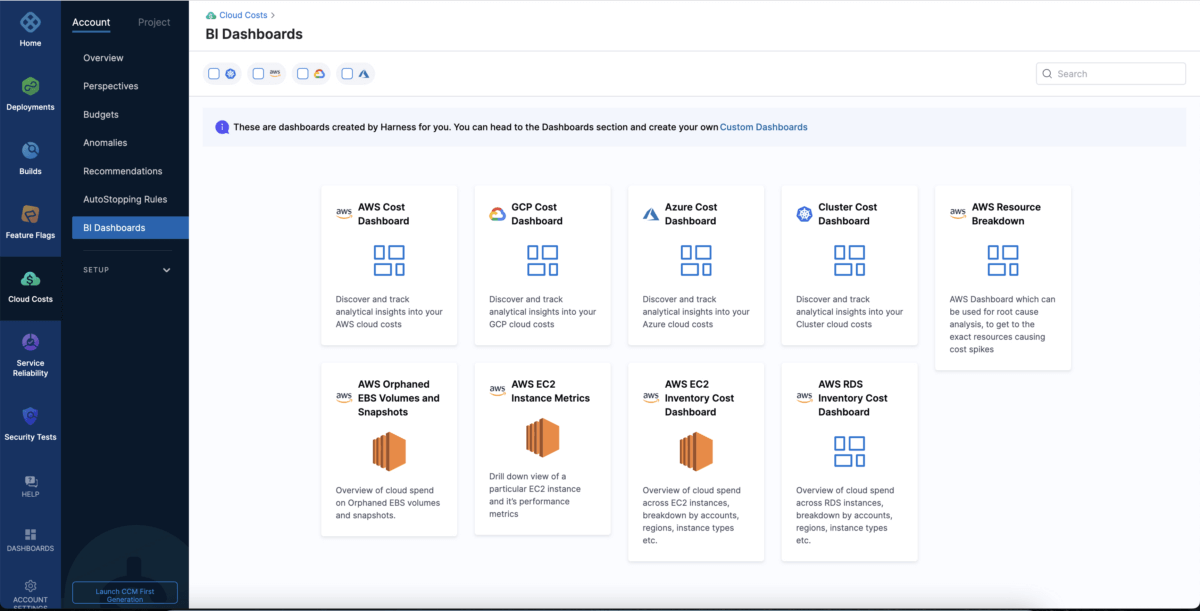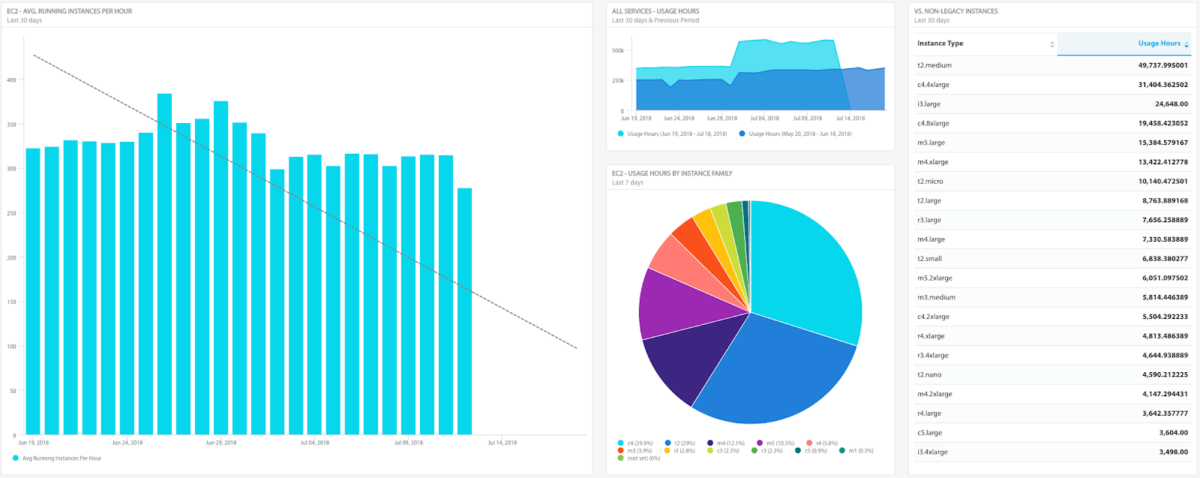As more teams jump on the AI bandwagon and see their Kubernetes costs skyrocket, they inevitably start searching for solutions that help control cloud bills. The market is brimming with new offerings, and Komodor’s cost optimization product is among them. But is there a Komodor alternative that provides a more automated approach?

Dive into our list of the most efficient Komodor alternatives for reducing the cost of running applications in the cloud, especially using solutions such as Kubernetes.
Komodor advantages and limitations

Source: Komodor
Komodor is a platform that includes a number of Kubernetes-specific products, with cost optimization among them. Here are the most important advantages and limitations of this solution:
Komodor advantages:
- Users get full cost visibility, including the ability to:
- Monitor the cost structure and resource use of their cluster.
- Budget for each business unit, team, environment, and application.
- Analyze costs over time to discover trends.
- Understand cost efficiency and possible savings
- Users can also proactively monitor optimized resources to ensure continuous operations, avoiding out-of-memory issues or CPU throttling
- Finally, Komodor offers cost optimization features that let users:
- Analyze real-time usage against their requirements
- Identify and eliminate idle resources
- Choose the right optimization strategy for each environment
Komodor drawbacks:
- Komodor users get cost optimization recommendations in the rightsizing dashboard and can apply them with one click of a button, which indicates that Komodor doesn’t provide autonomous optimization on a continuous basis and requires some degree of manual work.
- Komodor cannot propose initial requests, but within a week can provide amended right-sizing recommendations based on actual usage (source: Komodor documentation)
If you’re looking for a fully automated solution that rightsizes machines for your Kubernetes clusters and takes even more tasks off your plate, Komodor is probably not the right fit for you.
6 Komodor alternatives for Kubernetes cost optimization
1. CAST AI – automated cost management and optimization for Kubernetes
Yup, this is us! We have many satisfied customers who appreciate our end-to-end Kubernetes automation solutions. And CAST AI isn’t just another Kubernetes monitoring tool.
CAST AI is an end-to-end platform that automates the cost optimization of Kubernetes applications across several aspects. Full-scale infrastructure automation is its main benefit. This includes rightsizing, instance selection, autoscaling, spot instance utilization, and resource scheduling, among other things.
However, CAST AI is not a black box. It supports real-time Kubernetes cost monitoring and allows customers to categorize cloud expenditures into project, cluster, namespace, and deployment levels. Teams can trace expenses down to individual microservices and receive an exact monthly or annual cost estimate.
The most potent component of CAST AI, however, is automation. With the purpose of making the cloud infrastructure cost-effective, the platform selects appropriate compute resources for changing application requirements. When a cluster requires additional nodes, it chooses the best-performing instances at the lowest cost to avoid overprovisioning.
CAST AI advantages:
- CAST AI is built for Kubernetes teams and addresses challenges specific to cloud-native technologies.
- The platform employs AI to discover the best resources for your application’s requirements while saving resources with autoscaling and rightsizing capabilities.
- CAST AI’s autoscaling settings help users save money: if there is no work to be done, the platform determines the ideal number of necessary pod instances, modifies the pod replica count, and eliminates all nodes.
- CAST AI also employs automated bin packing to maximize savings and minimize resources that are underutilized.
- It has a cost reporting module that breaks down infrastructure expenses by project, cluster, namespace, and deployment. Teams can track spending down to individual microservices and then calculate cluster costs accurately.
CAST AI limitations:
- CAST AI is only compatible with Kubernetes (EKS, Red Hat OpenShift, AKS, and GKE).
Takeaway: CAST AI is the right solution for teams that want to cut expenses without increasing technical effort. It’s an excellent choice for organizations wishing to automate time-consuming cost-cutting tasks like instance selection, rightsizing, or autoscaling.
To learn more about what CAST AI automates, take a look here: Automate Kubernetes Deployment with CAST AI to Reduce Your Cloud Bill by 60%
CAST AI vs. Komodor – quick comparison
The main difference between Komodor and CAST AI lies in the level of automation each of these tools offers. Komodor’s automation capabilities cover only rightsizing. CAST AI provides automation features for bin packing, instance selection, rightsizing, autoscaling, and machine learning-powered spot instance automation.
Moreover, Komodor users receive cost optimization recommendations in the rightsizing dashboard and are then responsible for applying them by clicking a button. With CAST AI, users can set specific policies and turn automation on; from that moment on, the automation engine will start bin packing pods into nodes, moving pods to more cost-efficient virtual machines, and supplying spot instances to workloads chosen by the user.
See CAST AI in action
End those massive cloud bills! Learn how to cut 50%+ automatically
2. Spot by NetApp

Source: Spot by NetApp
Spot by NetApp is a cloud cost management solution that focuses on spot instance automation to improve cloud expenses. The platform automatically gets spot capacity for workloads, assisting in cost reduction and ensuring high availability.
The platform breaks out the expenses involved with cluster deployment and gives information on each tier. Costs can be broken out into namespaces, particular workloads within each namespace, and further filtered.
You also get data on compute and storage expenses for each workload to help assess your application costs, do chargebacks without a lot of resource tracking, and forecast future cloud expenses.
Spot by NetApp has a useful rightsizing recommendation system that analyzes workload consumption in real-time and provides teams with suggestions for manually modifying resource needs. This enables high-level visualization and quicker implementation.
The platform essentially provides a cloud cost optimization solution that decreases cloud spending by concentrating on spot instances rather than other cost-cutting alternatives. Spot by NetApp initiates a scale-down to drain and terminate an instance when it detects workloads in an instance that may be dispersed across a cluster. It enables you to operate clusters on spot instances without provisioning or scaling instances.
Spot by NetApp advantages:
- Spot by NetApp is a cloud cost management application that uses spot instance automation to reduce cloud expenses.
- It splits cluster infrastructure expenses and provides information for each infrastructure tier.
- You may divide costs into namespaces and particular workloads inside each namespace, and you can further filter them by layer.
- Users get compute and storage expenses for each task.
- Spot by NetApp continuously analyzes workload usage and provides recommendations for manually changing resource needs by container and task. This allows for simpler high-level visualization and faster implementation without interfering with applications.
- Spot by NetApp detects unscheduled pods and scales infrastructure to guarantee that all of your pods have a place to run.
- Furthermore, Spot by NetApp prioritizes downscaling the least used nodes and eliminating them if all pods operating on them can be moved.
Spot by NetApp limitations:
- The solution saves money by concentrating workloads on spot instances, so you may miss out on additional cost-cutting possibilities as a result of this. Spot by NetApp, for example, has only limited rightsizing options for regulating VM size.
Takeaway: Spot by NetApp decreases cloud expenses by focusing on spot instances. The tool recommends running workloads primarily on more spot instances, missing out on additional cloud cost optimization possibilities that might result in even greater savings. So, teams might get more out of solutions that offer the same level of automation but can do more than just spot instances. Ideally, these solutions should be able to automatically figure out how much work needs to be done and match it with the right cloud resources, like CAST AI.
3. Cloudcheckr
Note: CloudCheckr has been acquired by NetApp.
CloudCheckr is a cloud management tool that specializes in reporting, cost-cutting suggestions, and policy-based automation. The platform originated as a cloud security tool, but it was later expanded to incorporate cost management, tracking, optimization, and resource inventory solutions.
The platform gives a comprehensive view of cloud cost allocation data, allowing you to monitor costs across the resources of all major cloud service providers.
The monthly reports show the evolution of cloud spending, allowing your team to interact with the data and improve billing accuracy. Alerts combined with cloud governance will give your team more control and help you prevent costly surprises.
CloudCheckr advantages:
- CloudCheckr generates resource purchasing recommendations using predictive analytics. Discovering underutilized resources and giving resizing recommendations helps teams achieve cost savings.
- The solution runs hundreds of checks to discover idle resources, unused instances, mismatches in reserved instances, and other problems. However, it just makes recommendations for rightsizing and snapshot cleanups.
- Although CloudCheckr is primarily focused on policy-based cloud management, it does offer some fascinating automation features, such as automatically re-allocating, resizing, and upgrading reserved instances. By storing previous data about RI inventory, the system supports teams in making future purchases.
- CloudCheckr automatically enforces tag-or-terminate criteria for improved cloud infrastructure control. Customers can also benefit from automated spot instance selection and replacement operations, which can yield considerable long-term savings.
CloudCheckr limitations:
- Limited automation capabilities require additional work.
Takeaway: CloudCheckr is best suited for companies looking to optimize cloud investment and visibility. The software detects trends and recommends cost-cutting methods for the entire firm, teams, or projects. These changes, however, will take longer owing to limited automation options that require additional technical work for full implementation.
4. Harness

Source: Harness
Harness cloud cost management is a solution for continuous delivery and integration that focuses on cost transparency, optimization, and governance. The tool delivers extensive visibility into your Kubernetes clusters and cloud charges, showing costs associated with projects, teams, business units, departments, and other organizations.
It simplifies cloud management by offering bespoke budgeting, projections, cost showbacks, and chargeback accounts. It includes detailed reporting as well as real-world cloud optimization tips. Cluster use, rightsizing, autoscaling, and cleaning underutilized or orphaned resources are a few examples.
Before implementing new optimization tactics, Harness allows users to perform a what-if analysis to understand how they could affect their spending. You can create budgets, track spending variations, continually monitor your consumption, and receive warnings when it exceeds specified limitations.
Harness also provides self-service cloud cost management and optimization technologies, such as AutoStopping, which can switch off non-production resources while they are not in use.
Harness advantages:
- Harness provides a continuous delivery and integration module as well as Business Intelligence tools that enable transparency, optimization, and oversight of all your cloud expenditures.
- The solution provides comprehensive Kubernetes visibility by showing consumed, idle, and unallocated resources by job and cluster. It displays the costs associated with projects, teams, business units, departments, and other organizations.
- It also allows you to generate monthly reports based on the most critical cost and consumption statistics. Harness streamlines cloud expenditure management by providing bespoke budgeting, forecasting, cost showbacks and chargeback accounting.
- Harness notifies you when it deviates from expected levels, allowing you to monitor cost and utilization across your cloud services.
- The platform includes data-driven dashboards that can help your team track resources across all public cloud providers.
Harness limitations:
- Although the cost insights are valuable, the recommendations must still be executed manually because the technology doesn’t allow for full automatic cost optimization.
- The solution also lacks important cloud optimization and automation tools like autoscaling.
- The platform offers two types of suggestions: performance-optimized recommendations and cost-optimized recommendations. The former may increase your costs, while the latter may reduce system performance.
Takeaway: Harness provides cost insights into your apps, services, and environments without the need for human tagging, which saves engineers’ time. Regardless of how useful this information is, you must manually incorporate it because the platform does not provide true multi-cloud cost optimization. Important cloud optimization and automation technologies such as autoscaling, rightsizing, and provisioning are also missing from the platform.
5. Apptio Cloudability

Source: Apptio Cloudability
Cloudability’s financial management capabilities are useful for monitoring, allocating, and reviewing public cloud costs. Teams may use Cloudability to manage and reduce cloud costs, automate a variety of cloud optimization operations, and make wiser cloud budget decisions.
Cloudability is primarily a monitoring and optimization tool for the cloud. It examines data from the last 10 to 30 days and offers rightsizing recommendations for your resources. Moreover, the solution enables you to create separate dashboards for different products, departments, or roles inside your business. True Cost Explorer provides teams with a simple visual analysis of cloud charges and data use.
The system may compute the ROI of spot instances and make further recommendations for cloud optimization. As a result, your teams will be able to develop a more consistent budget while also laying the groundwork for future forecasting.
Cloudability advantages:
- Cloudability automates several types of cloud costs. To begin, teams can configure and schedule daily cleanups of disconnected EBS volumes.
- During periods of low usage, the software can automatically stop activities.
- Customers may also utilize the platform to scale ASGs or to halt and restart EC2 and RDS instances while confirming the amount of resources impacted.
Cloudability limitations:
- Automation capabilities are limited.
Takeaway: While Cloudability offers excellent cloud cost management tools and data-rich dashboards, the product’s limited automation features limit its multi-cloud optimization and automation capabilities.
6. Zesty

Source: Zesty
Zesty began as a storage optimization tool and has subsequently evolved into a reserved cloud capacity buy-back business.
The application gives rapid results and decreases reserved capacity management costs for teams utilizing Amazon EC2 Reserved Instances by integrating AI and automation.
Zesty advantages:
- Zesty continually checks your cloud infrastructure requirements and modifies your RI reservations as needed.
- To develop its prediction model, the app collects data on your Amazon EC2 usage trends. It examines the costs of RIs on the market at the same time to get the best rates for the requirements of your workload.
- Zesty’s freemium edition allows you to evaluate possible EC2 savings in minutes without installing any additional software.
- The software includes RI consumption statistics like on-demand compute cost, effective EC2 cost, daily compute cost, and more. It also displays your expenses over time as well as future forecasts.
Zesty limitations:
- Because the platform only supports Amazon EC2 Reserved Instances, you will need to use alternative tools if you use other cloud service providers.
- The solution doesn’t provide a more comprehensive approach to expense awareness and control in the cloud.
Takeaway: While Zesty can assist AWS users in reducing costs, it requires a more holistic approach to regulating and lowering cloud costs. As a result, it focuses on the symptoms rather than the underlying reason.
Wrap up
Because provisioning and scaling cloud resources is so simple, many organizations lose control of their cloud spending. A single overlooked error or architectural issue may easily add up to a hefty payment at the end of the month.
That is why you need a Kubernetes cost monitoring and optimization toolkit that provides total visibility, extensive reporting, and, ideally, automatic optimization capable of meeting the continuously changing requirements of cloud-native apps.
// get started
Optimize your cluster for free
Try powerful Kubernetes automation features combined with full cost visibility via cluster-specific savings reports and cost monitoring.
No card required
Unlimited clusters
Instant savings insights
FAQ
Komodor is a Kubernetes management platform that offers cost optimization as one of the available modules. Users may seek alternatives for various reasons, such as cost considerations, specific feature requirements, or compatibility issues. For example, if users need more automation features, Komodor’s solution might not offer enough capabilities.
Some popular Komodor alternatives include CAST AI, Spot by NetApp, Kubecost, Cloudcheckr, and Zesty – each coming with its own set of features and benefits.
Komodor’s pricing can vary, and so can the pricing structures of its alternatives. It’s essential to compare the cost based on your specific usage and requirements.
Key features to consider include the availability of automation features, ease of use, scalability, compatibility with your Kubernetes environment, support, and integration capabilities.
Start by evaluating your specific needs and priorities. Then, conduct a thorough comparison of features, pricing, and user reviews to make an informed decision.





Leave a reply